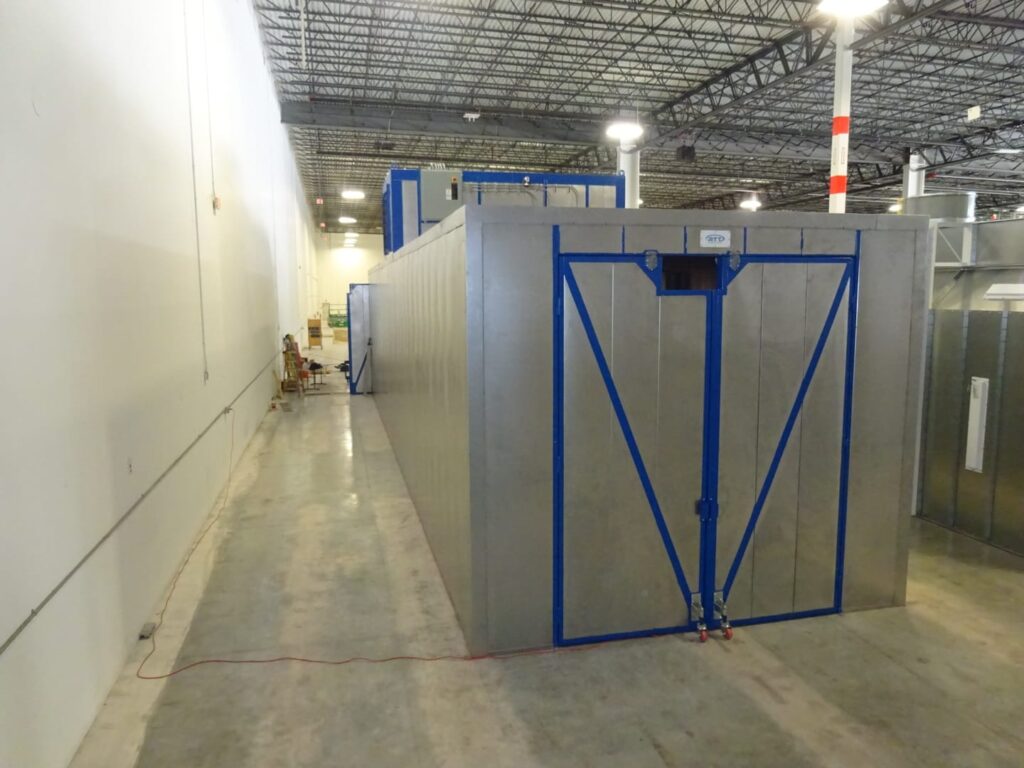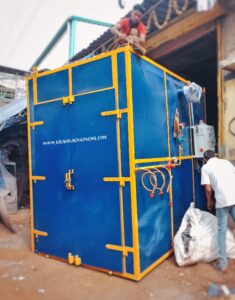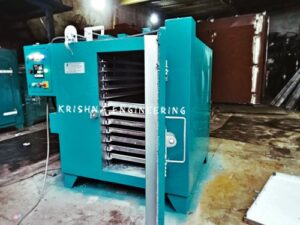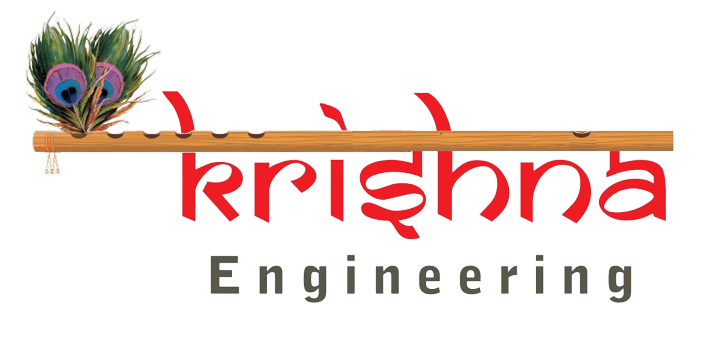What is Liquid Coating Oven?
A liquid coating oven, also known as a paint curing oven or drying oven, is a type of industrial oven used for the curing or drying of liquid coatings, such as paints, lacquers, varnishes, or powder coatings applied to various materials. The oven provides controlled heat and airflow to facilitate the curing process, allowing the liquid coating to dry and form a durable, protective finish.

Typically used as a sacrificial or corrosion inhibiting layer for atmospheric protection, this process applies a paint-like, thermally cured coating.
Liquid coating is a wet paint applied through manual or automatic spraying. The coating is then cured by heat or air drying. Liquid coating can be formulized using solvents and other additives to give the thickness and finish needed.
Here’s a general overview of how a liquid coating oven works:
Preparation: The item or material to be coated is usually prepped and cleaned to remove any dirt, grease, or previous coatings. It may also undergo pre-treatment processes like surface preparation or chemical treatments, depending on the specific coating requirements.
Coating Application: The liquid coating, such as paint or powder coating, is applied to the material using various methods like spraying, dipping, or brushing. The material is typically placed on a rack, conveyor, or hangers to facilitate easy movement through the oven.
Oven Loading: Once the coating is applied, the coated items are loaded into the liquid coating oven. The oven’s interior is designed to provide optimal heat distribution and airflow to ensure even drying and curing.
Heating: The oven is heated to the required temperature using electric heaters, gas burners, or other heat sources. The temperature and curing time depend on the type of coating being used and the material being coated. The oven may have temperature controls and sensors to monitor and regulate the heat levels accurately.
Airflow and Ventilation: Proper airflow is crucial to remove any volatile organic compounds (VOCs) emitted during the curing process. The oven may have ventilation systems, exhaust fans, or filters to control and eliminate harmful fumes or gases.
Curing and Drying: The coated items remain inside the oven for a specified duration to allow the coating to cure and dry. The curing process chemically bonds the coating to the surface, creating a durable and protective layer. The time required for curing depends on factors like coating type, thickness, temperature, and material being coated.
Cooling and Unloading: After the curing process is complete, the oven may have a cooling phase to bring down the temperature before the items are unloaded. Once cooled, the finished items are removed from the oven for further processing, packaging, or quality control checks.
Liquid coating ovens are widely used in industries such as automotive, aerospace, metal fabrication, furniture manufacturing, and various other sectors where high-quality surface finishes and protection are required. They offer efficient and controlled drying/curing processes, enabling manufacturers to achieve consistent and reliable coating results.
Worldwide Exports Location:
Following Countries: Afghanistan, Albania, Algeria, Andorra, Angola, Antigua And Barbuda, Argentina, Armenia, Australia, Austria, Azerbaijan, Bahamas, Bahrain, Bangladesh, Barbados, Belarus, Belgium, Belize, Benin, Bhutan, Bolivia, Bosnia And Herzegovina, Botswana, Brazil, Brunei, Bulgaria, Burkina Faso, Burundi, Cabo Verde, Cambodia, Cameroon, Canada, Central African Republic (CAR), Chad, Chile, Colombia, Comoros, Democratic Republic Of The Congo, Republic Of The Congo, Costa Rica, Cote D’Ivoire, Croatia, Cuba, Cyprus, Czech Republic, Denmark, Djibouti, Dominica, Dominican Republic, Ecuador, Egypt, El Salvador, Equatorial Guinea, Eritrea, Estonia, Ethiopia, Fiji, Finland, France, Gabon, Gambia, Georgia, Germany, Ghana, Greece, Grenada, Guatemala, Guinea, Guinea-Bissau, Guyana, Haiti, Honduras, Hungary, Iceland, India, Indonesia, Iran, Iraq, Ireland, Israel, Italy, Jamaica, Japan, Jordan, Kazakhstan, Kenya, Kiribati, Kosovo, Kuwait, Kyrgyzstan, Laos, Latvia, Lebanon, Lesotho, Liberia, Libya, Liechtenstein, Lithuania, Luxembourg, Macedonia (FYROM), Madagascar, Malawi, Malaysia, Maldives, Mali, Malta, Marshall Islands, Mauritania, Mauritius, Mexico, Micronesia, Moldova, Monaco, Mongolia, Montenegro, Morocco, Mozambique, Myanmar (Burma), Namibia, Nauru, Nepal, Netherlands, New Zealand, Nicaragua, Niger, Nigeria, North Korea, Norway, Oman, Pakistan, Palau, Palestine, Panama, Papua New Guinea, Paraguay, Peru, Philippines, Poland, Portugal, Qatar, Romania, Russia, Rwanda, Saint Kitts And Nevis, Saint Lucia, Saint Vincent And The Grenadines, Samoa, San Marino, Sao Tome And Principe, Saudi Arabia, Senegal, Serbia, Seychelles, Sierra Leone, Singapore, Slovakia, Slovenia, Solomon Islands, Somalia, South Africa, South Korea, South Sudan, Spain, Sri Lanka, Sudan, Suriname, Swaziland, Sweden, Switzerland, Syria, Taiwan, Tajikistan, Tanzania, Thailand, Timor-Leste, Togo, Tonga, Trinidad And Tobago, Tunisia, Turkey, Turkmenistan, Tuvalu, Uganda, Ukraine, United Arab Emirates (UAE), United Kingdom (UK), United States Of America (USA), Uruguay, Uzbekistan, Vanuatu, Vatican City (Holy See), Venezuela, Vietnam, Yemen, Zambia, Zimbabwe.
India Location –
Maharashtra, Mumbai, Pune, Nagpur, Nashik, Virar, Palghar, Aurangabad, Bhiwandi, Thane, Amravati, Malegaon, Kolhapur, Nanded, Sangli ,Jalgaon, Akola, Latur, Ahmadnagar, Dhule, Ichalkaranji, Chandrapur, Parbhani, Jalna, Bhusawal, Navi Mumbai, Raigad, Panvel, Bangalore, Karnataka, Ahmedabad, Gujarat, Chennai, Tamil Nadu, Surat, Coimbatore, Vadodara, Indore, Madhya Pradesh, Bhubaneswar, Orissa, Hyderabad, Andhra Pradesh, Jamshedpur, Jharkhand, Kolkata, West Bengal ,Delhi, Jaipur, Rajasthan, Kochi, Kerala, Chandigarh, Punjab, Dehradun, Uttarakhand , Lucknow, Uttar Pradesh, Visakhapatnam, Andhra Pradesh, Guwahati, Assam, Amritsar, Mangalore, Noida, Gurgaon, Haryana, Bhopal, Madhya Pradesh, Aurangabad, Faridabad, Allahabad, Prayagraj, Jodhpur.




